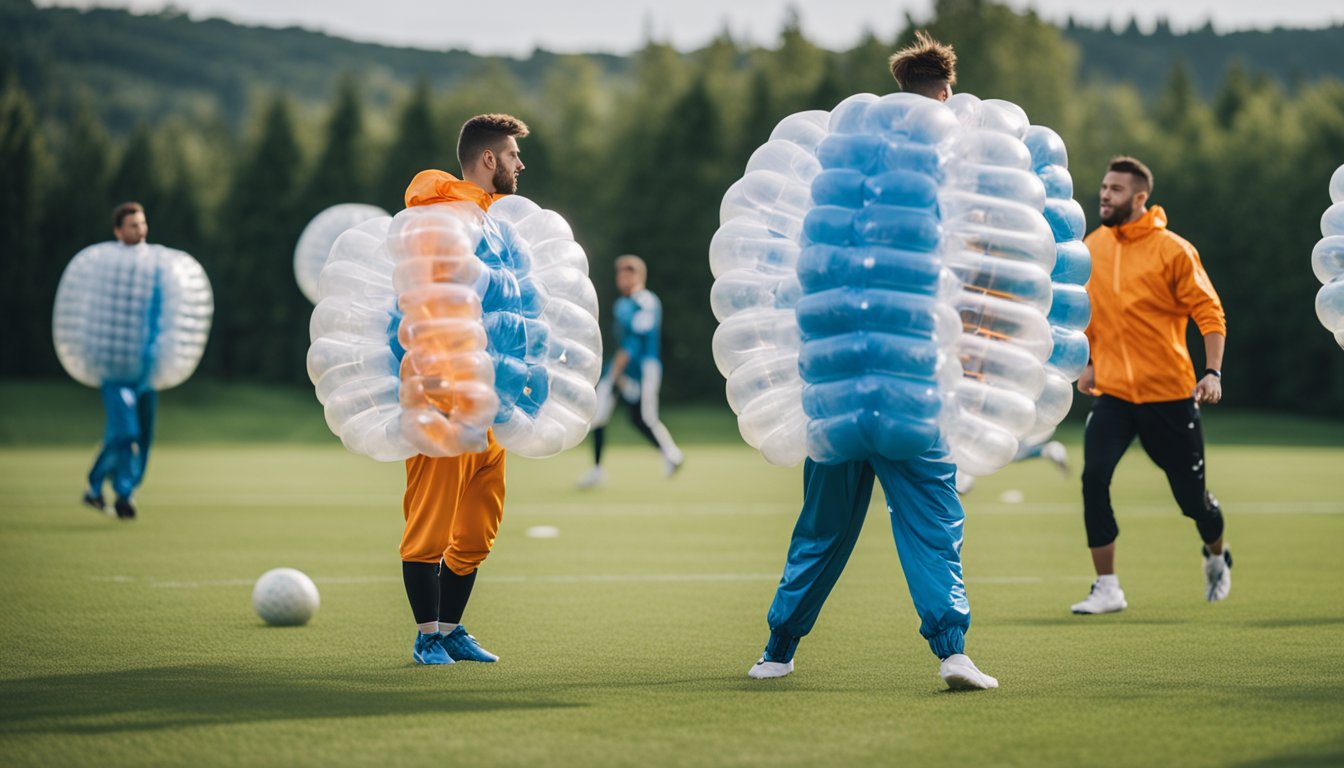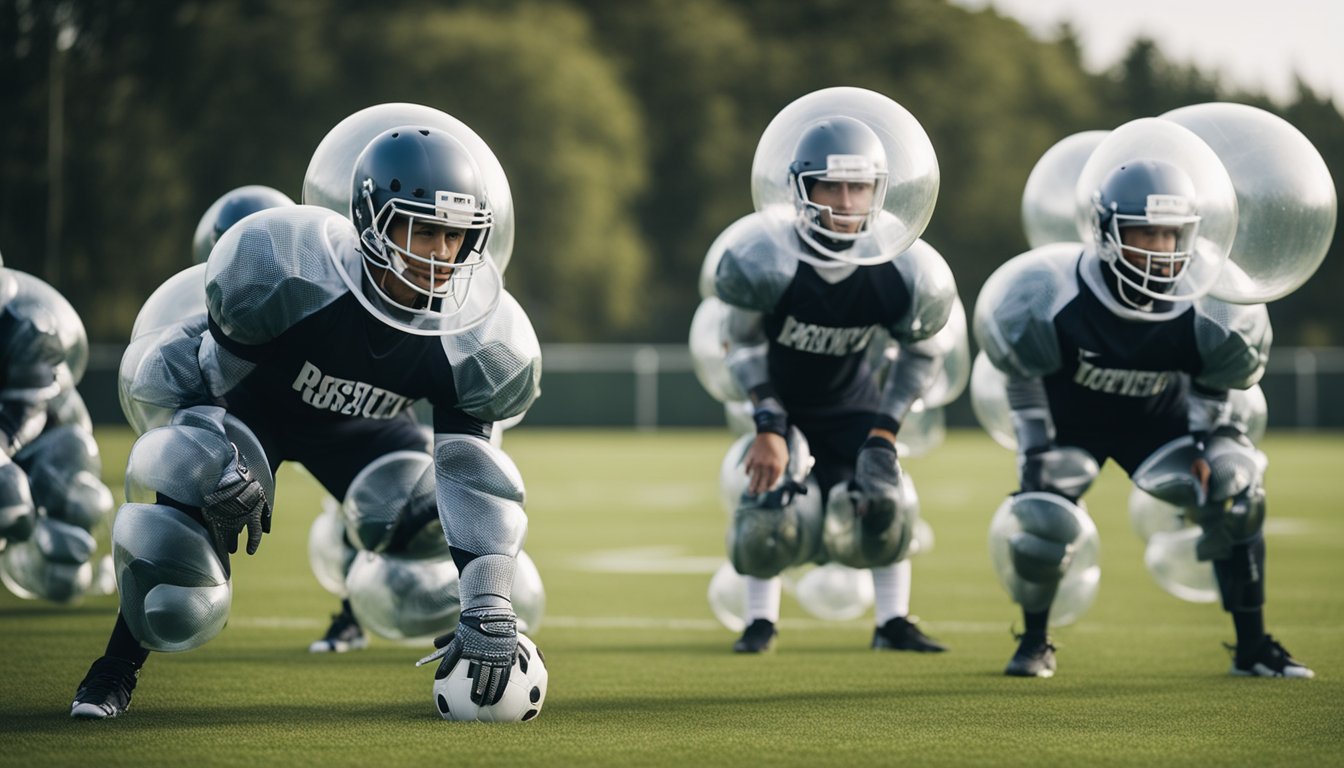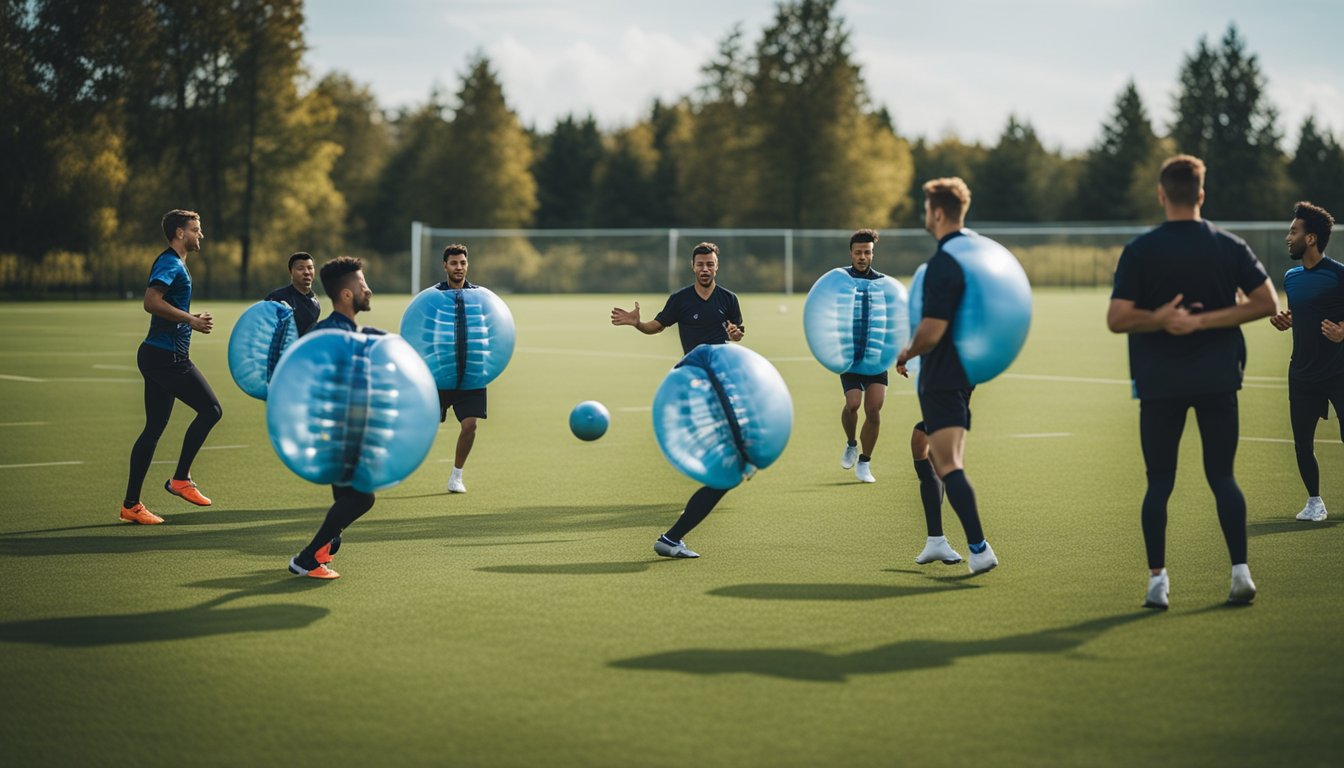Late updated: 27 Sep 2024 09:09
Written by: Emma Saunders
Bubble Football Warm-Up Exercises For Injury Prevention: Essential Routines for Safety
In the energetic world of bubble football, staying safe and injury-free is just as important as scoring goals. Proper warm-up exercises play a crucial role in preventing injuries and enhancing performance. Implementing a thorough warm-up routine not only prepares our muscles but also sharpens our focus, allowing us to enjoy the game to its fullest.

We've explored various warm-up techniques, drawing from established programmes like FIFA’s injury prevention protocols. These involve dynamic joint stability exercises and tailored routines that address the physical demands of the sport. Effective implementation of these exercises can significantly reduce the risk of injuries, making them an essential part of any player’s preparation.
By prioritising a well-structured warm-up, we not only safeguard our well-being but also maximise our performance potential on the field. A commitment to proper preparation is the key to enjoying bubble football safely and successfully.
Key Takeaways
- Warm-up exercises are essential for injury prevention.
- Structured routines improve football performance.
- Establishing a warm-up foundation enhances safety.
Establishing the Warm-Up Foundation
To lay a strong foundation for injury prevention in bubble football, we focus on dynamic stretching and activating the cardiovascular system. These elements enhance flexibility and improve performance. By implementing a structured warm-up routine, footballers can optimise their agility and ensure effective progression during their gameplay.
Importance of Dynamic Stretching
Dynamic stretching is essential in preparing our muscles and joints for the rigours of bubble football. It involves active movements that take limbs through a full range of motion. This not only enhances flexibility and mobility but also reduces injury risks by gradually increasing the body's temperature.
A dynamic warm-up incorporates exercises like lunges with twists or arm circles, which mimic football movements. This prepares our neuromuscular system and improves overall coordination. By practising consistency in these movements, we enable better control and agility during gameplay.
Frequent and proper dynamic stretches elevate performance levels. Athletes experience improved muscle elasticity, which can handle sudden movements required in football. Through dynamic stretching, we establish a robust foundation that supports both stability and power, necessary for an engaging game of bubble football.
Activating the Cardiovascular System
Raising our heart rate effectively primes our body for physical exertion. Activating the cardiovascular system increases blood flow to the muscles, ramping up oxygen supply and essential nutrients. Initiating our warm-up with a light jog or brisk movements can effectively awaken our cardiovascular functions.
This activation process boosts endurance by preparing our lungs and heart for increased activity. It ensures that footballers maintain stamina throughout their playing session. By incorporating cardiovascular exercises like high-knees or butt-kicks, we energise our body, resulting in seamless and vigorous play.
The consistency in cardiovascular activation enhances long-term performance gains. Athletes achieve higher fitness levels while minimising fatigue risks. By investing in this facet of our warm-up routine, we build a resilient foundation necessary for engaging and sustained participation in bubble football.
Injury Prevention and Performance Optimisation

Incorporating effective warm-up exercises can significantly reduce injury rates and enhance performance in bubble football. Key elements include agility improvement, muscle flexibility, joint mobility, and mental readiness.
Drills to Boost Agility and Coordination
Agility and coordination are crucial to minimise injury risk and improve performance during bubble football. Injury prevention involves sport-specific drills, such as possession drills and agility training, which enhance reaction time and neuromuscular training.
Incorporating agility ladders or cone drills helps improve footwork and quick directional changes.
To further enhance coordination, we implement reaction-based challenges, requiring quick thinking and movement. Techniques such as pairing athletes for mirror drills ensure they mimic each other’s movements promptly, heightening awareness and coordination.
Enhancing Muscle and Joint Health
Maintaining muscle flexibility and joint mobility is essential for avoiding injuries such as anterior cruciate ligament injuries and other joint issues. Dynamic stretching should focus on the hamstrings, hip flexors, and quadriceps.
Plyometric exercises like jump squats and box jumps can effectively enhance leg strength and prepare muscles for the rigours of bubble football. Particularly, stability exercises focused on core stability and balance strengthen the body's foundation, potentially decreasing injury risks.
Promoting a consistent warm-up routine, we aim to mimic elements of the FIFA 11+ programme. This renowned programme emphasises targeted exercises that decrease knee injuries and enhance overall athletic performance.
Integrating Proprioceptive Training
Proprioceptive training plays a critical role in injury prevention by improving balance and joint stability. Practising exercises on uneven surfaces or using balance boards challenges our internal stability systems, fostering improved joint proprioception.
Emphasising neuromuscular training is vital for better body awareness, reducing the likelihood of joint injuries. By including exercises such as single-leg stands or crossbody reaches, proprioception increases, leading to enhanced mental readiness and coordination on the field.
The inclusion of these components not only aids in reducing injury rates but also supports performance optimisation through improved bodily control and efficiency in movements. The integration of such training methodologies provides us with a holistic approach to injury prevention and performance enhancement.
Frequently Asked Questions

In bubble football, preventing injuries requires an understanding of effective dynamic warm-up routines, specific stretching exercises, and the integration of proven injury prevention programmes. It is crucial to follow a proper sequence of activities and use ball-focused drills to enhance safety and performance.
What are effective dynamic warm-up routines to prevent injuries in bubble football?
Dynamic warm-up routines involve exercises that increase heart rate and boost blood flow to the muscles. Consider incorporating activities like jumping jacks, high knees, and leg swings. These exercises prepare the body for the physical demands of bubble football by enhancing muscle elasticity and joint mobility.
Which specific stretching exercises can minimise the risk of ACL injuries during a football match?
To reduce the risk of ACL injuries, focus on stretching exercises that target the lower body. Hamstring stretches, calf stretches, and quadriceps stretches are key. Incorporating lunges with a trunk twist and hip flexor stretches can further support knee stability and flexibility.
How can one integrate FIFA's injury prevention programme into pre-match warm-ups for football?
The FIFA 11+ programme is a comprehensive warm-up protocol developed with expert collaboration. Integrate its exercises into your routine to enhance effectiveness. Implement it by following the designated sequence of exercises, ensuring each session includes strength, balance, and agility components.
What is the proper sequence of warm-up activities to ensure readiness for a football game?
A proper warm-up sequence begins with light aerobic activities to increase heart rate. Follow this with dynamic stretches to enhance range of motion. Next, add agility drills to refine coordination, and finally, include skill-specific exercises to mentally and physically prepare players for the game.
Can you suggest some ball-focused drills for an injury preventive warm-up in football?
Incorporating ball drills can enhance coordination and focus, reducing injury risks. Begin with simple passing drills while moving, progressing to dribbling challenges that mimic game situations. Ending with controlled shooting practices can provide a comprehensive approach to injury prevention in warm-ups.
What are the best practices for conducting a warm-up session that guards against common football injuries?
Best practices include incorporating a structured warm-up that aligns with players' needs. Ensure the routine progresses from general to specific activities. Maintaining focus on technique throughout prevents unnecessary strain. Consistency in warm-ups reinforces habits that contribute to long-term injury prevention.
